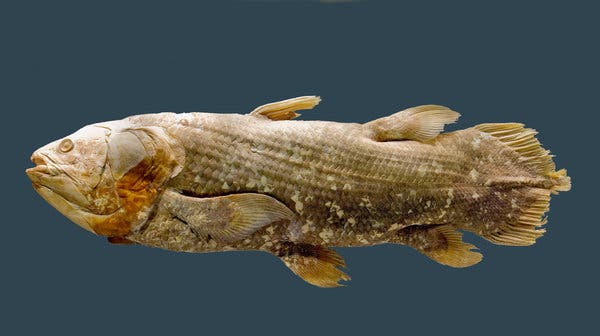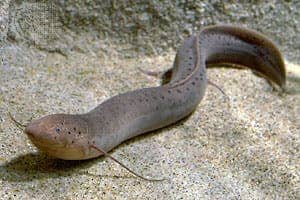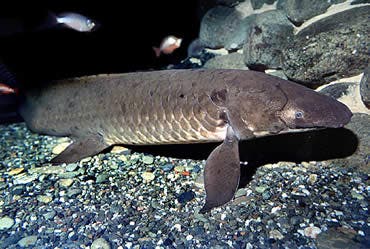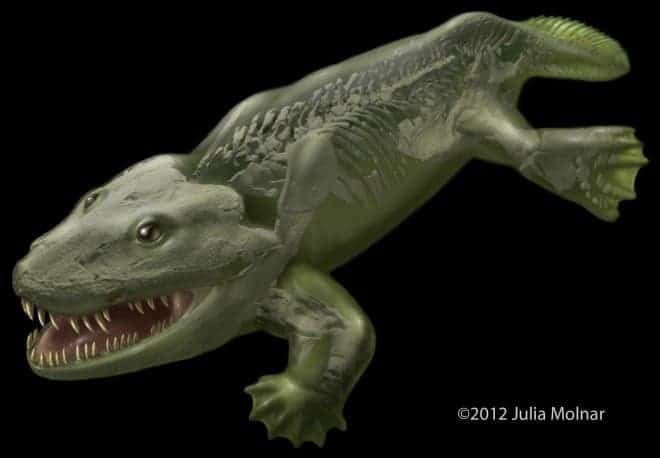
Researchers who had performed the first high detail 3-D reconstruction of early tetrapod (four-legged animals) backbones claim the first land based animals moved by dragging themselves around the ground much in the same way modern day seals behave.
The scientists used the European Synchrotron Radiation Facility (ESRF) in Grenoble to bombard 360-million year old fossils with high energy X-rays, which enabled them to reconstruct the extinct animals’ backbones in never before seen detail. One of the scanned fossils belonged to a toothy species called Ichthyostega, a transitional species between water and land based animals.
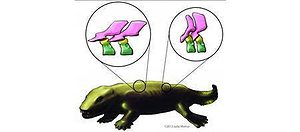
“For more than 100 years, early tetrapods were thought to have vertebrae composed of three sets of bones – one bone in front, one on top, and a pair behind,” says Stephanie Pierce, of the University of Cambridge’s Department of Zoology and lead author of the present study.
“But, by peering inside the fossils using synchrotron X-rays we have discovered that this traditional view literally got it back-to-front.”
From water to land
The high power X-rays allowed tiny fossils buried deep inside the rock that hadn’t been identified before to become visible. Thus, what was thought to be the first bone – known as the intercentrum – is actually the last.
“By understanding how each of the bones fit together we can begin to explore the mobility of the spine and test how it may have transferred forces between the limbs during the early stages of land movement,” Pierce said.
These features allowed the scientists to deduce that the Ichthyostega likely moved about by dragging themselves like modern day seals. Maybe even in a more important discovery, the researchers also identified hitherto unknown skeletal feature, like a string of bones extending on the chest of the extinct beast.
Co-author Jennifer Clack explained, “These chest bones turned out to be the earliest evolutionary attempt to produce a bony sternum. Such a structure would have strengthened the ribcage of Ichthyostega, permitting it to support its body weight on its chest while moving about on land.”
The scientists next plan on studying how the backbone aided locomotion in these early four-limbed animals. Findings were detailed in a paper published in the journal Nature.
